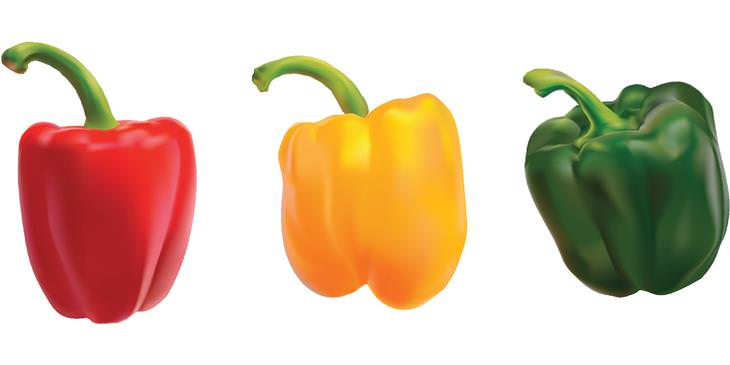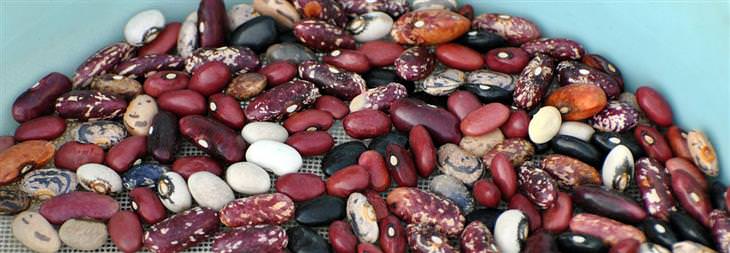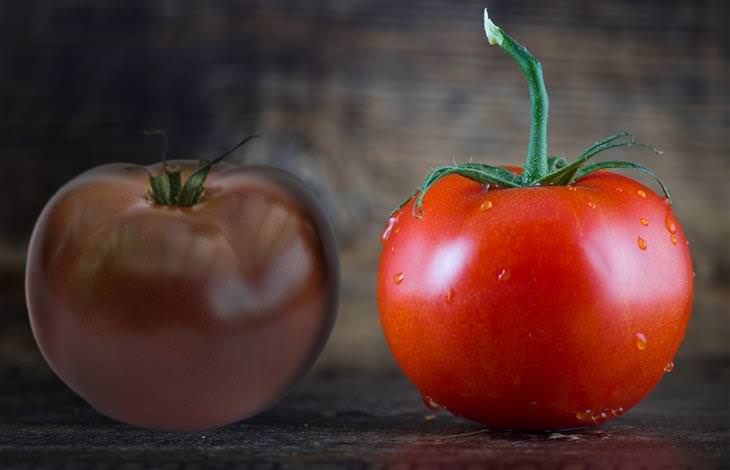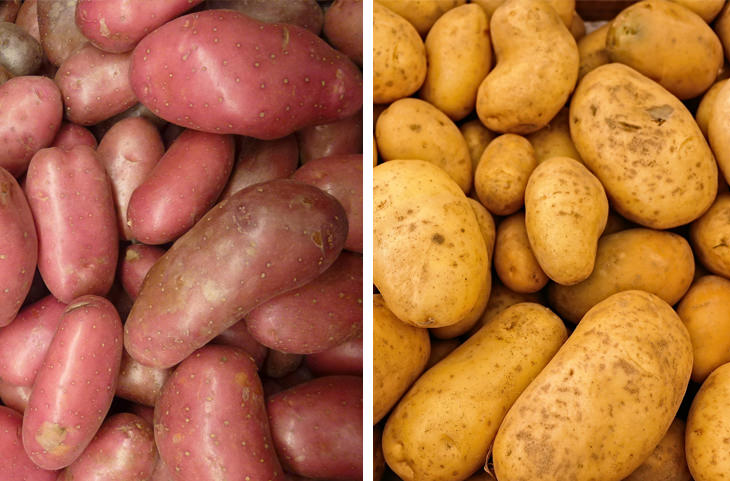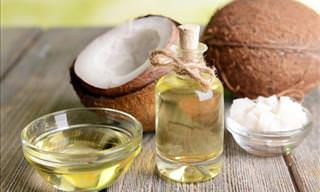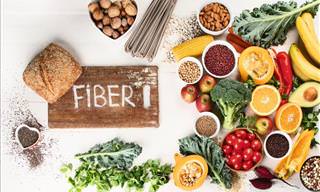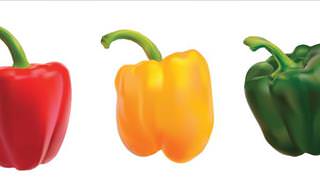Bell peppers come in three different colors - green, red and yellow/orange. The red and yellow/orange bell peppers are riper than the green ones, so green bells have a more bitter taste than others. They also have the lowest nutritional value, with the red bell pepper having the highest amount of potassium and vitamins A and C. As a result, the red variety is considered to be the healthiest of all bell peppers.
2. Onions
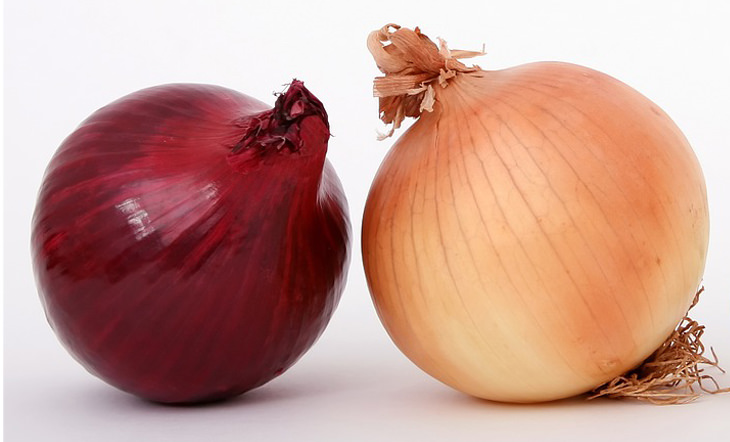
Onions comes in many varieties and colors, the most common being white, yellow, purple and green. Most of us use the yellow onion, but you may want to start adding more purple onions to your diet. This is because they have a higher antioxidant content, making them great for cancer prevention.
In addition, all types of onions are good blood thinners, but purple is more efficient at this because they contain a greater number of flavonoids. Although green onions can’t be compared to other onions when it comes to cooking, you should know that the green onion has twice as much potassium than other onions, and the vitamin A and C content is significantly higher, but it does not contain vitamin B6 as other onions do.
3. Cabbage
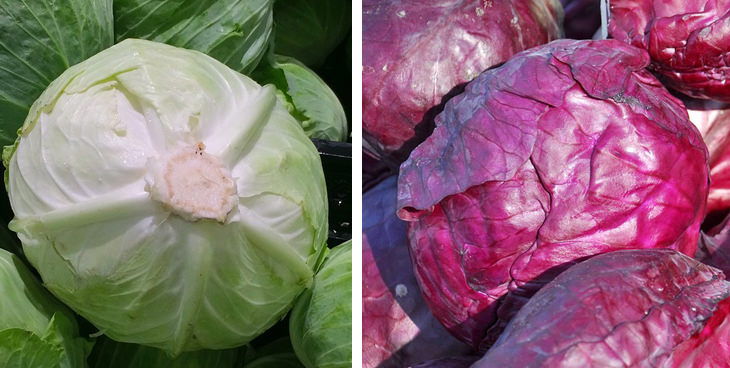
If you eat a cup of green cabbage a day you get 3% of the recommended daily serving of vitamin A, but if you consume the same amount of purple cabbage, you will get 19% of the recommended amount of vitamin A per day.
The same can be said about the vitamin C content of purple cabbage, and in addition, only purple cabbage contains anthocyanin, which is a flavonoid that helps prevent cancer and improve memory. Eating purple cabbage is recommended for those who are on a diet because anthocyanin causes the release of hormones in the body that suppress appetite.
4. Beans
Beans may not be vegetables, but because they are so popular in cooking, and they come in so many colors and types, it's a food that cannot be left off this list. All types of beans have a high amount of protein and folic acid and a low glycemic index. However, each type of bean has a variety of health benefits, such as, reducing the risk of cancer, lowering cholesterol, and diabetes prevention.
5. Carrots

You can find carrots in many different colors at farmers markets, with the most common being orange, purple and white. Orange carrots contain a high amount of beta-carotene, which helps maintain eye health and improves vision in the dark, but a higher amount can be found in the purple variety.
In addition, the purple carrot also has anthocyanins, which are powerful antioxidants that remove free radicals from the body and help maintain normal blood flow. Compared to these two, white carrots are considered the least recommended, simply because they do not provide the same health benefits as orange and purple carrots.
6. Tomatoes
We usually eat red tomatoes, but at various markets and stores, you can also find the black variety, which is considered healthier and more nutritious. Black tomatoes get their color from the anthocyanins found in them, which, as mentioned previously, helps prevent cancer and improves memory.
This benefit makes black tomatoes highly recommended for people with vascular problems, as anthocyanins contribute to protecting the body against cardiovascular disease. They also have greater numbers of vitamin A and C, so they better contribute to improved vision and reduced inflammation than red tomatoes.
7. Potatoes
There are many special varieties of potatoes, but those most frequently used in the kitchen are russet and red potatoes. Red potatoes contain fewer carbohydrates and more protein, which means they are more helpful in weight loss, but if want to increase your iron and calcium intake, you should choose the russet potato - it contains 1.9 mg iron and 14 mg calcium per 85 grams, while the red variety contains only 0.7 mg of iron and no calcium at all.
8. Garlic
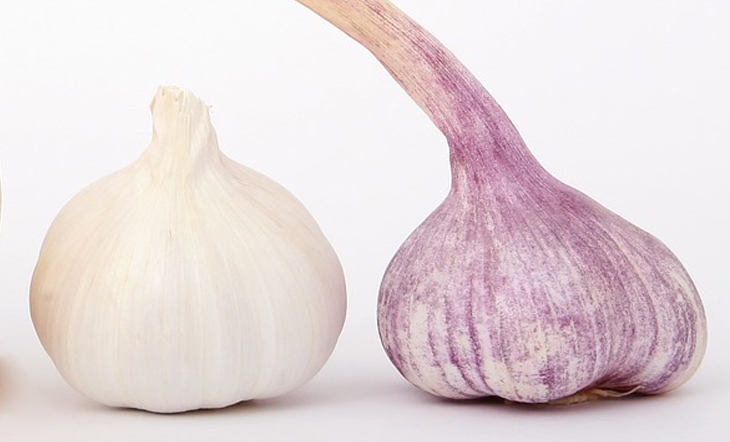
White garlic is the most recognized and common variety of garlic, but during certain times of the year, you can also find purple garlic, which is considered to be much healthier. It reduces the amount of insulin that the body secretes, which helps diabetics cope with the disease, has stronger anti-inflammatory properties than white garlic and contains more antioxidants such as, allicin and magnesium, which help prevent the development of cancer cells. For all these reasons, it is not difficult to understand why purple garlic is more recommended than white.
Conclusion
When you’re faced with picking vegetables at the supermarket, grocers, or farmers market, choose the ones with darker colors, especially red and purple. The same stuff that gives these vegetables their color also keeps cancer away and improves circulation in the body, which is very important for maintaining health. In addition, they also contain more vitamins that strengthen various systems in our body and are therefore undoubtedly the smartest and healthiest choice.
 Go to BabaMail
Go to BabaMail


